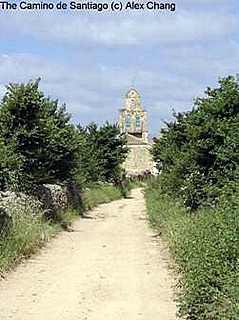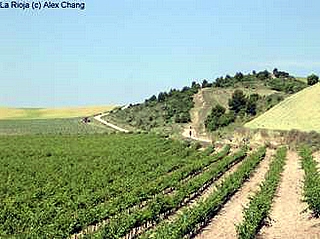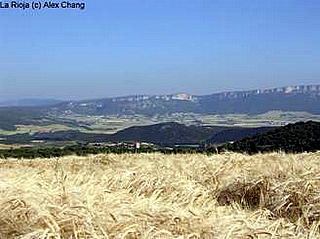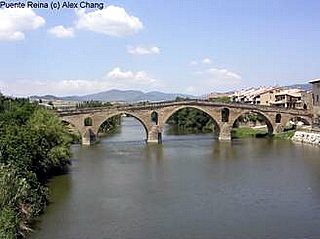You've heard it before, whether on a bus or a train, you'll soon be able to hear “hi, I'm on the plane” as people shout into their mobile phones; our friends Ryanair have announced a deal with communications joint venture OnAir to fit its aircraft with technology to allow passengers to use their mobile phones on planes. Another money spinning venture, Ryanair's entire fleet of Boeing 737 aircraft will allow passengers to call, text and email using their mobile phones, BlackBerrys and Treos by the beginning mid-2007. Rates are said to ” mirror international roaming charges.” Ryanair are still looking to introduce in-flight internet games and gambling.
As if Ryanair aren't proving 'no frills' to the extreme, they are now charging passengers for checking in baggage before flights. The charge for each item of luggage going in the hold is now £5 – £2.50 if notified before the day of travel. Ryanair justified this by saying that it was introducing the charge in an effort to reduce queues and airport handling costs. It said passengers carrying only hand luggage would avoid the extra fee and be able to check in online – reducing their overall ticket price by 9%. Earlier this year Ryanair said it hoped to encourage more people to travel on its flights with just hand luggage. “We have to be more creative as to how we tackle costs,” Ryanair chief executive Michael O'Leary said in January. Reducing airport and handling costs would also save Ryanair more than £20m over the current financial year, the company said.
Ever tried to buy one of the dirt cheap Ryanair tickets, only to find that your inside leg measurement isn't 31 ½ inches, you weren't born on 23rd April and your name doesn't begin with M?
Back in May, Ryanair was reprimanded by the UK's Advertising Standard Authority (ASA) over a “free tickets” offer. Ryanair advertised three million free tickets, as long as passengers paid taxes and other charges. The ASA said the advert misled, because the free ticket offer did not apply on Fridays and at some peak travel times. Ryanair argued back saying the advert was not misleading, as it stated the offer excluded major sporting events and holiday periods. Nevertheless, the ASA concluded the advert was “misleading” and told the firm to make clear “all significant exclusions to offers in the small print of future advertising”.

 China's rising thirst for oil has long caused consternation in the geeky circles of the oil industry, as most recognized some time ago that the growing band of Shanghainese abandoning bicycles for BMW's would mean a sharp rise in global petrol demand. With the world now well aware of this dilemma, the oil industry is pondering where it will find sufficient oil to meet China's needs.
China's rising thirst for oil has long caused consternation in the geeky circles of the oil industry, as most recognized some time ago that the growing band of Shanghainese abandoning bicycles for BMW's would mean a sharp rise in global petrol demand. With the world now well aware of this dilemma, the oil industry is pondering where it will find sufficient oil to meet China's needs. 

 Most journeys into the desert begin in Urumqi, a modern city indistinguishable from any other second tier Chinese city. Though it formed part of the original Silk Road, a journey through the desert was long considered a death sentence, and it wasn't until 1995 that a highway was erected. Though the highway allows access to the amenities of the region's cities to the tiniest desert village, some villages chose to remain closed and the highway was evidently rerouted and the villages excluded from maps to accommodate this. Ironically, those who put great store in recreating ancient methods of traversing the desert (donkey, rickshaw, et al) also rely heavily on the “shamo gonglu” highway.
Most journeys into the desert begin in Urumqi, a modern city indistinguishable from any other second tier Chinese city. Though it formed part of the original Silk Road, a journey through the desert was long considered a death sentence, and it wasn't until 1995 that a highway was erected. Though the highway allows access to the amenities of the region's cities to the tiniest desert village, some villages chose to remain closed and the highway was evidently rerouted and the villages excluded from maps to accommodate this. Ironically, those who put great store in recreating ancient methods of traversing the desert (donkey, rickshaw, et al) also rely heavily on the “shamo gonglu” highway. 
 There are also plentiful cultural activities along the route, including the remains of the “lost city” of Subashi, well-maintained mosques, and little visited museums – we had to wake the curator from a lunchtime nap to ask him to turn the lights on for us in one.
There are also plentiful cultural activities along the route, including the remains of the “lost city” of Subashi, well-maintained mosques, and little visited museums – we had to wake the curator from a lunchtime nap to ask him to turn the lights on for us in one.  In 1993, UNESCO declared the Camino de Santiago a world heritage site. It starts from the boarder of France and works it way west to the city of Santiago de Compostela covering some 750 kilometres. Originally, pilgrims had to navigate their way using the sun, moon, stars, and even the Milky Way. Getting lost was part of the journey. Today, the trail is so clearly marked that losing your way is not really an option. With shiny traffic signs, brass and tile scallop shells, and the distinct yellow arrows you'll always be pointed to Santiago.
In 1993, UNESCO declared the Camino de Santiago a world heritage site. It starts from the boarder of France and works it way west to the city of Santiago de Compostela covering some 750 kilometres. Originally, pilgrims had to navigate their way using the sun, moon, stars, and even the Milky Way. Getting lost was part of the journey. Today, the trail is so clearly marked that losing your way is not really an option. With shiny traffic signs, brass and tile scallop shells, and the distinct yellow arrows you'll always be pointed to Santiago.  The oldest documentation of the Compostelana, the official certificate of having completed the pilgrimage, was delivered to André le Breton in the Capilla del Rey de Francia and dates back to 1321. Almost 700 years later, you can still request the Compostelana certificate, complete with your name in Latin. To be eligible you must have either walked or ridden a horse for the last 100 kilometres or bicycled the last 200 kilometres. The demand for this document has grown such that there is now a special Pilgrim's Office that will attend to your petition.
The oldest documentation of the Compostelana, the official certificate of having completed the pilgrimage, was delivered to André le Breton in the Capilla del Rey de Francia and dates back to 1321. Almost 700 years later, you can still request the Compostelana certificate, complete with your name in Latin. To be eligible you must have either walked or ridden a horse for the last 100 kilometres or bicycled the last 200 kilometres. The demand for this document has grown such that there is now a special Pilgrim's Office that will attend to your petition. 


 Despite a thousand years, the Camino de Santiago remains and its pilgrims continue to flow into Santiago. The Camino is an unforgettable experience that creates a special bond and camaraderie among all those who have walked it. In a world where things change so quickly, the Camino de Santiago is so refreshing as things really haven't changed so much after all!
Despite a thousand years, the Camino de Santiago remains and its pilgrims continue to flow into Santiago. The Camino is an unforgettable experience that creates a special bond and camaraderie among all those who have walked it. In a world where things change so quickly, the Camino de Santiago is so refreshing as things really haven't changed so much after all!